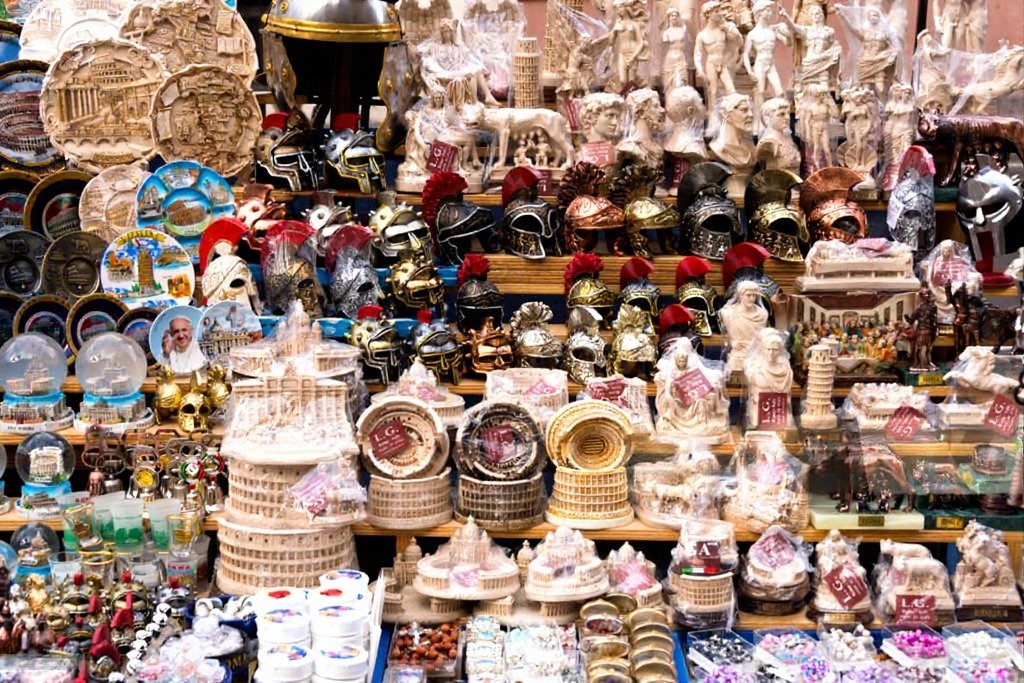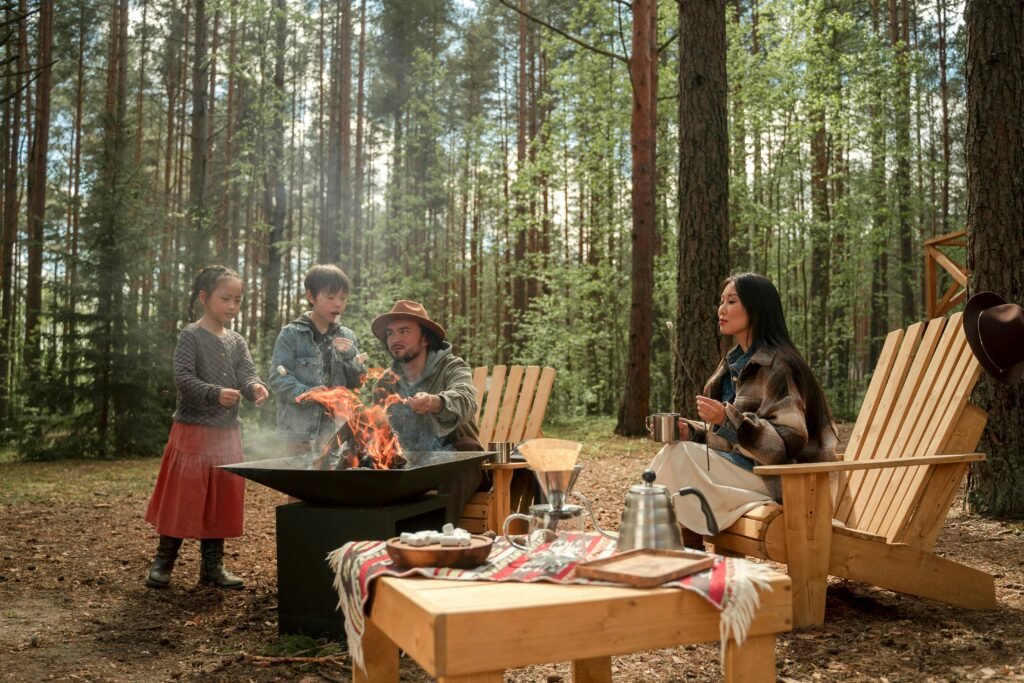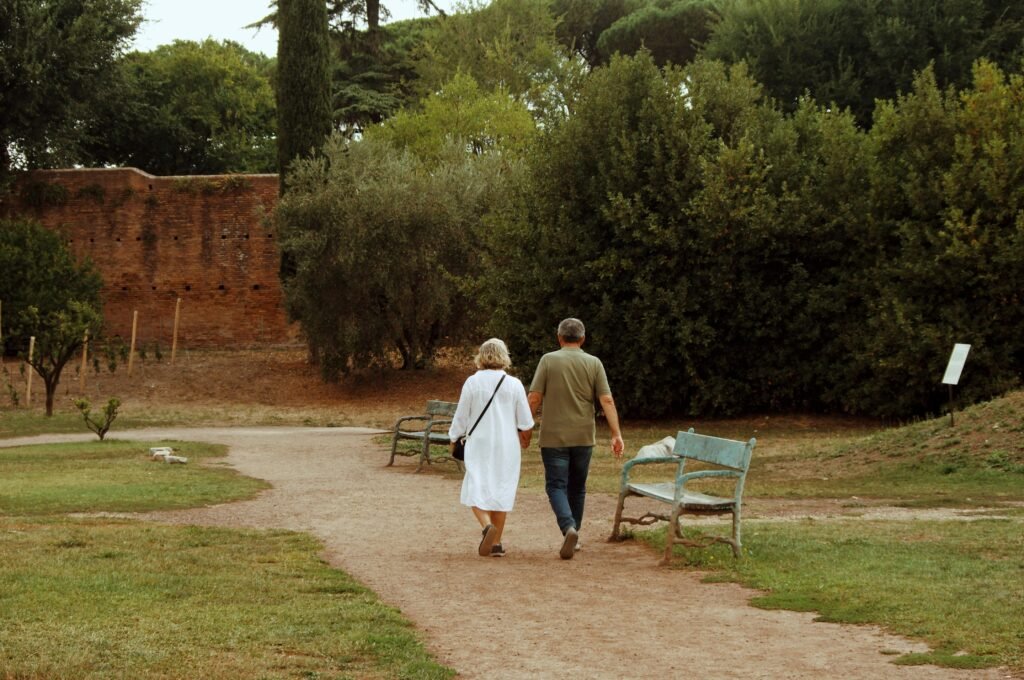you love old maps, classical furniture, Roman coins, vintage fashion, rare books, or handcrafted treasures, seeing a Rome antique market is one of the most exciting ways to discover the city.
Rome is not just a living museum-it’s also home to a lively marketplace culture that’s been alive since ancient times. Similar to the historic attractions within the city, the open-air markets and antique bazaars convey the idea of centuries of trade, craftsmanship, and personal histories that have evolved into modern times.
This guide will help you explore the historical flea market and antique world of the Eternal City. So, let’s get started!
History and Cultural Importance of Antique Markets in Rome
Antique markets Rome are nothing new—dating back to the early days of the Roman Empire, when open commerce was a part of everyday life. Trajan’s Market often represents what could be argued as the world’s oldest shopping mall, serving as a reminder of deeply trade-shaped Roman civilization.
As stated in a historical analysis from the Journal of Roman Studies, structured trade, pricing, and merchant culture in the ancient Roman economy are no different from those in commercial centres today. This history still lives today in the city’s open-air flea markets and vintage fairs.
Travelers appreciate these markets for offering them:
- Authentic Roman craftsmanship
- Artistic restoration traditions
- Objects of real historical value
- A chance to experience “local Rome,” not just tourist Rome
It also reflects Italy’s identity as a nation of collectors, storytellers, and artisans.
Types of Antique Markets Rome
Not all Rome antique markets are created the same: depending on your interests, everything from style to price range to atmosphere will be different.
1. Flea Markets
These are the open-air, casual markets that are often bustling on weekends. They’re perfect for:
- Bargain hunters
- Vintage treasure seekers
- Travelers who want authentic everyday souvenirs
Flea markets typically offer budget-friendly prices and lots of personality, making them perfect for visitors who ask themselves, ‘Is Testaccio Market worth visiting?’ or seek a laid-back morning of wandering and discovery.
2. Specialized Antique Markets
For serious collectors, Rome also hosts curated antique events offering:
- Original signed artwork
- Furniture
- Old clocks
- Vintage jewelry
- Fine collectibles
- Historical documents
These markets feel more like mini-exhibitions, with sellers often acting as experts and selling items accompanied by some degree of provenance or verbal history.
3. Weekend & Seasonal Markets
Some antique fairs are open only on specific days, especially on Sundays. This is why travelers on short tours, such as an Italy Honeymoon or a Rome weekend getaway, should check schedules in advance.
Best Antique Markets to Visit in Rome
The city is filled with markets. Some are small, some are massive, and some only open once a month. Below are the most popular and interesting options:

1. Porta Portese Market: Rome’s Most Famous Flea Market
- Best for: Vintage clothing, bicycles, books, vinyl records, household antiques, historic memorabilia
- When to visit: Sunday mornings
- Location: Near Trastevere
Porta Portese is the legendary giant of Rome’s antique markets: a market which really feels alive, chaotic, and deeply Roman in spirit. Spread out along several long streets with thousands of stalls, this is the place where anything and everything can turn up.
Do you need cash at Porta Portese?
While digital payments are becoming more common, cash remains the most accessible and widely accepted payment method. Smaller notes also make negotiation smoother, and bargaining is absolutely expected at many stalls.
2. Borghetto Flaminio: Chic, Curated, and Stylish
- Best for: Designer vintage fashion, leather bags, statement jewelry, upscale accessories
- Open: Most Sundays
- Ideal for fashion enthusiasts, stylists, collectors, and discerning shoppers with an eye for detail.
While Porta Portese is the wild heart of Roman flea culture, Borghetto Flaminio is its elegant counterpart. The market is neatly organized, intimate, and beautifully curated, much closer to a pop-up fashion salon than the traditional open-air bazaar. Prices are generally higher, but the condition and originality of items typically justify the cost. This is the perfect market for shoppers who want style and refinement—without the overwhelming crowds.
Here you’ll find:
- Authentic Italian vintage designer items
- Handcrafted leather bags
- Antique jewelry
- Second-hand outfits are in good condition and well-maintained.
3. Mercato Monti: Hip, Independent, and Creative
- Best for: Handmade goods, indie brands, contemporary crafts, vintage clothing
- Nearby: The Colosseum
The Mercato Monti is a popular marketplace for younger Roman designers, fans of vintage things, and international tourists who love supporting small, creative vendors. This market feels very urban and cosmopolitan, similar to the hip craft markets in Barcelona or small artisan markets in Florence.
You won’t find mass stalls of goods, but rather a mix of modern and traditional pieces by independent makers:
- Small fashion labels
- Retro jackets and dresses
- Upcycled accessories
- Art prints and illustrations
- Unique home décor
4. Via Sannio: Local, Affordable, and Full of Character
- Best for: Affordable fashion, minor vintage items, casual antiques
- Atmosphere: Laid back, refreshingly unpretentious
Via Sannio is the Rome antique market culture in its most genuine, day-to-day form: no Porta Portese grandeur here, no curated glamour like Borghetto Flaminio. What it does have, however, is genuine community character and prices that locals truly appreciate.
Haggling is typical here, and half the experience. The vendors are laid-back and friendly, often happy to tell stories behind what’s on their tables. This is the marketplace for travelers who want to feel how ordinary Romans shop – not in tourist boutiques, but in the living market of the city.
While exploring Rome’s antique markets is a delight in itself, travelers seeking a broader Italian market experience can head to the renowned Market in Ventimiglia.
What You Can Buy at Antique Markets in Rome?
Antique markets in Rome offer a diverse collection spanning centuries: small, sentimental, valuable, and museum-worthy. Some of the common finds include:

Vintage Jewelry
Roman jewelry spans a wide range, from mid-century designs to rare, handcrafted pieces. Many travelers love them because they are personal and wearable souvenirs.
Roman Coins
For many history enthusiasts, there is nothing quite like it. Prices differ based on:
- Condition
- Rarity
- Age
- Metal
Old Books & Manuscripts
Perfect for collectors of paper history, especially items related to:
- Religion
- Politics
- Classical literature
- Art history
Furniture & Home Décor
Bigger pieces are primarily found in higher-end markets and estate displays. These items often have stories that sellers are happy to share.
Ceramics & Glassware
From hand-painted plates to Art Deco ashtrays or Venetian glass, these are beautiful and easy to transport.
Fashion & Leather Goods
Rome is filled with exquisite vintage Italian leather bags, belts, and coats—often sold at far better prices than new goods.
How to Spot Authentic Items in the Rome Antique Market?
With reproductions common across Italian antique markets, it helps to know what to look for:
- Check the Patina: Authentic aging signs include tarnish, wear, and natural discoloration.
- Learn Common Reproduction Signs: For example, wooden furniture that looks perfect may be machine-produced.
- Certificates for Expensive Items: Sellers offering high-value objects often provide paperwork.
- Talk to Sellers: Many have decades of knowledge—don’t hesitate to ask questions.
- Trusted Stalls: Vendors with long-standing stalls are generally reliable options.
How to Plan Your Rome Antique Market Visit?
Exploring a Rome antique market is one of the most memorable experiences you can add to your itinerary, and with just a little planning, you can make the most of your visit. Understanding when to go, how long to spend, and the best ways to get around will help you shop comfortably while enjoying the atmosphere like a local.
Best Days to Go
While some Rome markets operate throughout the week, the city’s most historic and famous flea markets are weekend experiences. The schedule varies, so timing your visit makes a big difference:
- Sundays are the prime market day
Especially for major spots like Porta Portese and Borghetto Flaminio, Sunday mornings are when the streets come alive with vendors, bargain hunters, collectors, and curious travelers. - Saturdays are ideal for Monti
Mercato Monti typically operates on weekends, but Saturdays often have a slightly calmer pace, making them perfect for relaxed browsing. - Arrive early for the best finds
If you arrive around 7:00 AM to 9:00 AM, you’ll experience the markets at their most authentic, before the tourist rush.
How Much Time to Spend
Every market in Rome, Italy, has its own rhythm. Some can be explored in under an hour, while others span entire neighborhoods and require time (and energy) to navigate.
- Porta Portese: 2–4 hours
This market is enormous and easy to get lost in—in the best possible way. It’s perfect for a whole morning of treasure hunting. - Mercato Monti: 1–2 hours
More curated and compact, ideal for quality browsing rather than marathon shopping. - Casual browsing & photography: 45–90 minutes
If your goal is just to soak in the atmosphere, grab photos, and pick up one or two souvenirs, you can enjoy most markets in under two hours.
Getting to the Rome Antique Market
Rome’s antique markets are easily accessible thanks to the city’s extensive public transportation system. Depending on where you’re staying, you can reach most major markets via:

- Metro Lines A, B, and C: The quickest way to move between central districts.
- Local buses and trams: These services stop near most markets, providing access to residential areas where many antique fairs are held.
- Walking: Many markets are within strolling distance of popular neighborhoods, historic sites, or food destinations.
For example, if you’re already exploring Testaccio—whether on a food tour or visiting the celebrated Testaccio Market in Rome—it’s very easy to continue to Porta Portese afterward and make a whole cultural morning of it.
Conclusion
Whether you are a collector, a casual traveler, or someone who simply loves browsing through the past, the Rome antique market experience offers one of the best ways to connect with the city’s living history.
It bridges the old and the new, supports local communities, offers sustainable shopping options, and provides travelers with unforgettable souvenirs and stories to take home. From Porta Portese to Monti and beyond, every market in Rome tells a story—now it’s time to explore yours.
Frequently Asked Questions
Are there antique markets in Rome?
Yes—Rome has several flea and antique markets, with Porta Portese, Borghetto Flaminio, and Mercato Monti being the most popular. Each market offers a different experience, making it easy for collectors, casual shoppers, and curious travelers to find something unique.
Where is the largest antique market in Italy?
The Arezzo, Italy, Antique Market is widely considered the largest and oldest, attracting collectors from around the world. It’s a must-visit if you’re passionate about Italian antiques.
What time should I go to Porta Portese?
For the best finds and a more comfortable shopping experience, it’s recommended to arrive early, between 7:00 and 8:00 AM. This is when the market is least crowded and the most desirable items are still available.
What not to do in Rome as a tourist?
When visiting Rome’s markets (or the city in general), avoid overpaying without comparing prices – especially for antiques and vintage items. Also, carrying excessive cash or valuables without caution – busy markets can attract pickpockets.
What is the best month to go to Rome?
Spring (April to June) and fall (September to October) are the ideal seasons. The weather is mild, the streets are less crowded than in peak summer, and outdoor markets are enjoyable without the extreme heat.
Is Trajan’s Market worth it?
Absolutely. Trajan’s Market is often referred to as the world’s first shopping mall, dating back to ancient Rome. It provides a fascinating glimpse into ancient trade, commerce, and daily life.
Can I find vintage items at Porta Portese?
Yes! Porta Portese is renowned for its vast selection of vintage and second-hand goods, including clothing, books, vinyl records, jewelry, and collectible household items.
References:
Temin P. A Market Economy in the Early Roman Empire. Journal of Roman Studies. 2001;91:169-181. doi:10.2307/3184775
TY – CHAP
AU – Coen, Paolo
PY – 2018/09/26
SP –
SN – 9789004336995
T1 – The Art Market in Rome in the Eighteenth Century: A Study in the Modern ‘Social History’ of Art
VL –
DO – 10.1163/9789004388154_002
ER –
TY – JOUR
AU – Temin, P.
PY – 2001/11/01
SP – 160
EP – 181
T1 – A market economy in the early Roman empire
VL – 91
DO – 10.2307/3184775
JO – Journal of Roman Studies
ER –




